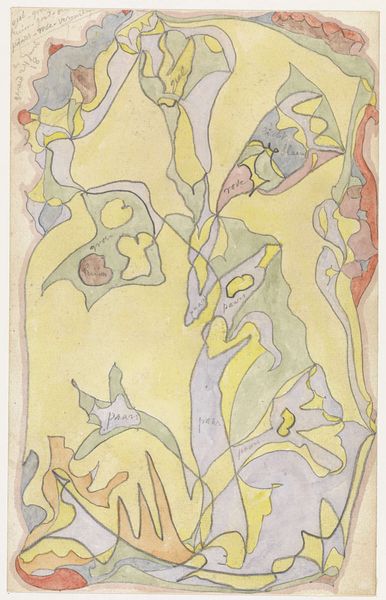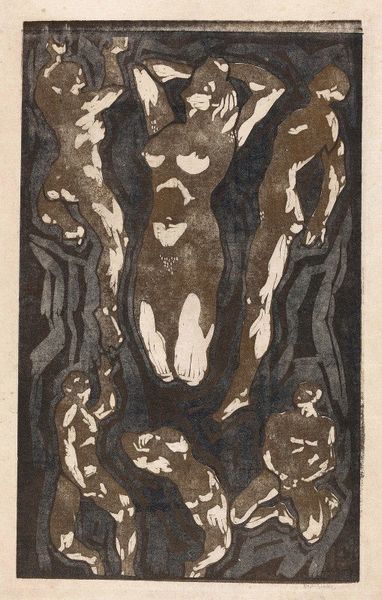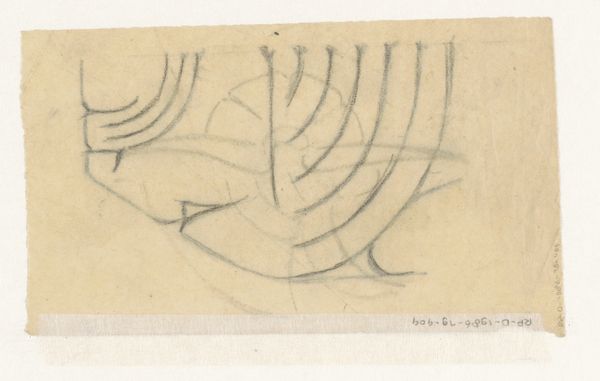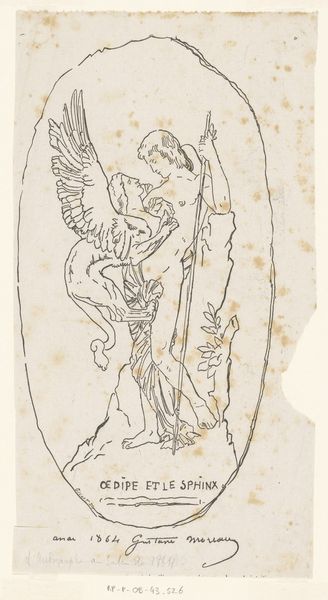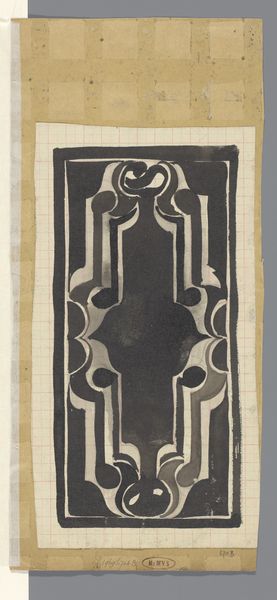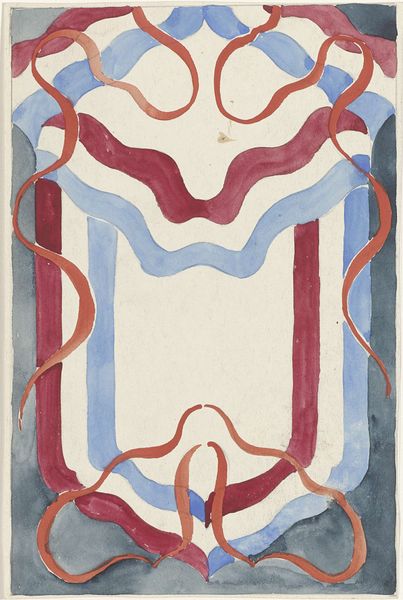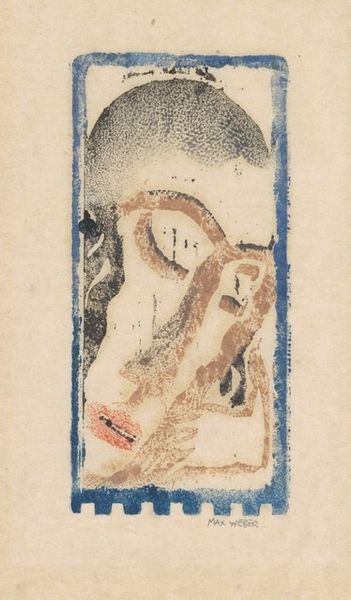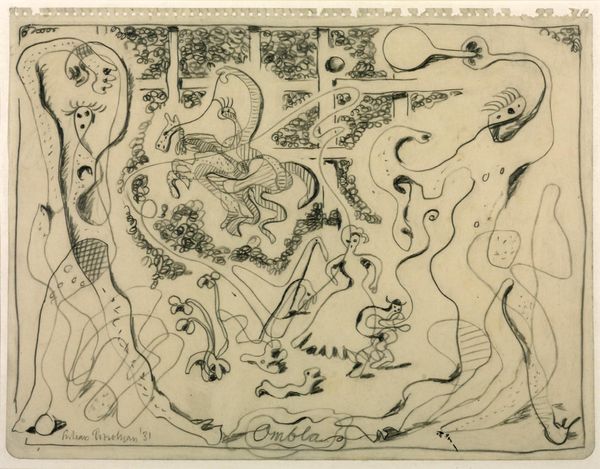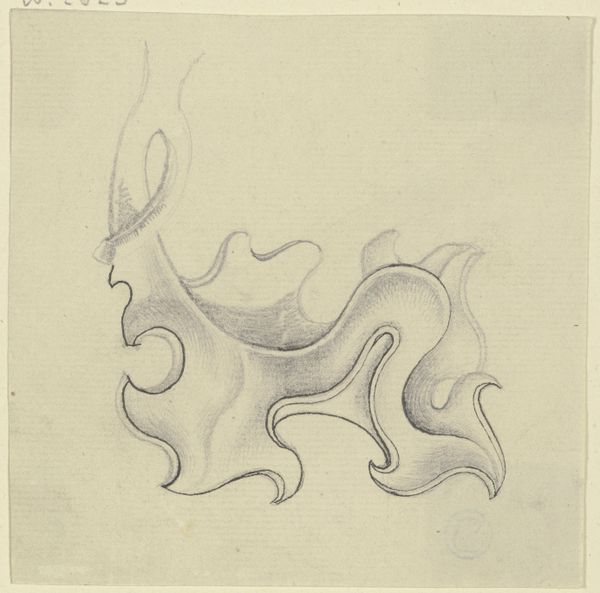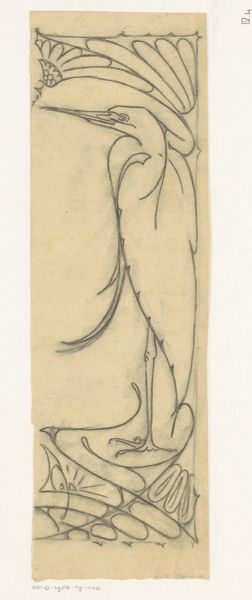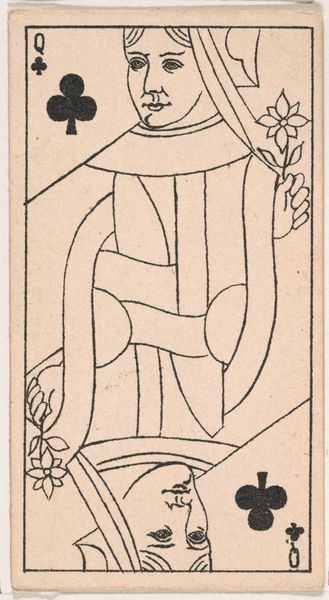
Dimensions: height 234 mm, width 149 mm
Copyright: Rijks Museum: Open Domain
Curator: What a curiously ethereal design; I can only describe its visual mood as quietly disruptive! Editor: Disruption and quiet rarely go together, do they? Let's step back, though. We're looking at "Floraal ornament," likely created around 1918 or 1919, by the Dutch artist Theo Colenbrander. The piece is a mixed media drawing—pencil, ink, and watercolor on paper. Curator: The forms! Interlocking shapes perform some semiotic function. Observe the organic elements: the flowing lines imply a network where flora and fauna intersect in symbolic dance. Perhaps the work carries echoes of Dutch floral still life tradition but utterly destabilized. It gives a feeling of layered hidden languages and fragmented memory. Editor: While those organic suggestions certainly resonate, I’m more drawn to the almost architectural underpinning. See how the abstract planes—defined by precise outlines and flat blocks of pale yellow, gray, and red—structure the image. The composition seems intent on creating a complex play between positive and negative space. The formal vocabulary pulls me toward considering abstract expressionism. Curator: Ah, but what does it express? It is expressionISM. The floral form acts as an imperfect signifier. It offers the expectation of a traditional botanical rendering, only to break this illusion and reveal underlying abstract anxieties during that specific historical period. There's more to see than simply form here. The suggestion of “floral” belies the underlying tension. Editor: Yet isn't that tension exactly what makes the formal play so dynamic? The carefully calibrated palette, those almost clinical lines against the softer watercolor washes... The contrast is key. It doesn't merely illustrate anxiety; it embodies the conflict directly in its materiality. The technique used also has this feeling of urgency due to its raw unfinished look. Curator: Materiality speaks volumes, and Colenbrander’s choice to embrace what appears unfinished hints at more than just the aesthetic value of incompleteness; it invokes the temporal and transient. Editor: Well, that gives me something to consider more carefully myself. It seems to me there's more than what we both saw during our initial encounter with the piece. Curator: Precisely, the artwork challenges us to read between the lines. It becomes a rich dialogue with our assumptions.
Comments
No comments
Be the first to comment and join the conversation on the ultimate creative platform.
